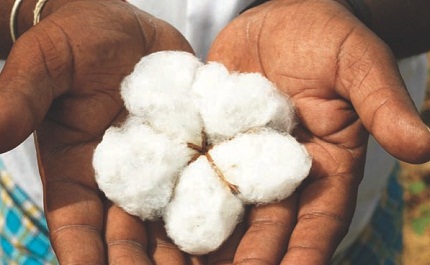Many scientists describe genetically modified (GM) crops as a panacea, many others as a Frankenstein monster. The debate is serious enough to need a global agreement, the Cartagena Protocol on Biosafety. This will be the first topic of discussion at the United Nations biodiversity summit starting this week in the southern Indian city of Hyderabad. But while the experts debate, GM foods are being consumed by us, whether we like it or not.
The clearest example is in India, host to this year’s UN Convention on Biological Diversity (UNCBD) summit. The Indian government has recently rejected yet another application by Mahyco – the Indian associate of the global GM seed giant Monsanto – to allow commercial cultivation of GM food crops. But India gave the go-ahead to the GM crop Bt cotton back in 2002, and now has the world’s largest area under this crop – planting 12.1 million hectares between 2011 and 2012, producing 35.5 million bales, according to Mahyco.
Rajendra Barwale, Managing Director of Mahyco, revealed a little-noticed side effect of Bt cotton cultivation in large swathes of India. The cottonseed is pressed to produce edible oil, which is sold for human consumption. With a production of 1.31 million tonnes in 2011-2012, oil from Bt cotton formed 13.7% of all edible oils produced in India for human consumption, Barwale told the audience at a seminar held in New Delhi by The Energy and Resources Institute.
There was more. Barwale said that in the financial year 2011-2012, 4.33 million tonnes of de-oiled cake was produced from Bt cotton in India for animal feed, one-third of all the de-oiled cake produced in the country for this purpose. Animal feed makes its way into human food through milk and meat.
India has two sets of regulations for GM crops. One set was approved in 1989, under the umbrella of the Environment Protection Act of 1986. Under these rules, the environment ministry has set up a Genetic Engineering Appraisal Committee (GEAC) to decide if a GM food crop is to be permitted. The committee had initially allowed Bt brinjal (a GM aubergine), which led to a furore, and the overturning of that decision by the then environment minister Jairam Ramesh.
A second set of regulations was made in 2006, by which the Food Safety and Standards Authority of India (FSSAI) is supposed to approve the decision to introduce any GM food. This authority is also in charge of GM labelling.
Rajesh Krishnan, head of the anti-GM crop campaign at Greenpeace India, told thethirdpole.net: “The GM function of FSSAI has not been put into practice. While GEAC continues to be the body which approves any environmental release [commercialisation and field research] of GM crops including food crops, there is much confusion with regard to who will approve import of processed food items derived from or containing genetically modified organisms (GMOs). Circular after circular has been released by both GEAC and FSSAI passing the buck to each other on who should be responsible, thus leaving the doors open to illegal import of GM food into Indian market. Greenpeace had exposed this at least twice in the past.”
So India is in a strange situation, where GM food crops are not allowed, GM cotton is allowed, and there is no rule on whether the by-products of this GM cotton can enter the food chain.
Countering all this criticism, proponents of GM crops point out that GM crops reduce pesticide use, because it is the job of the modified gene to fight pests. When pushing for approval of Bt brinjal, some scientists had said that India loses 33% of its brinjal crop to pests, and this had been brought down to 9% in field trials of GM brinjal.
But within three or four years, the pests mutate so that they can counter the new gene, said Douglas Gurian-Sherman of the Union of Concerned Scientists. Gurian-Sherman, author of the GM crop critique Failure to Yield, was in New Delhi late September, on way to the biosafety meeting in Hyderabad.
GM proponents say their critics are making a lot of unnecessary fuss, because humans have been selectively breeding crops since the dawn of agriculture, and the GM technology is no different. To this, the critics answer that selective breeding does not introduce a laboratory-produced bacillus into a gene. Proponents say field trials have shown no adverse effect of this introduction. Critics say the trials have not gone on long enough. Most lay observers, including policymakers, seem confused by the avalanche of contradictory scientific data produced by both sides.
The Cartagena Protocol, which bureaucrats and experts will discuss in Hyderabad in the first week of October, establishes procedures for regulating the import and export of living modified organisms from one country to another. While that is undoubtedly vital, expansion of GM crops in many countries is leaving the regulators behind. The policymakers need to talk about this and lay down some guidelines, but there are strong indications they may not. That will leave the fractious debate under the control of seed companies and NGOs, with few chances of any resolution.
Homepage image by Greenpeace



